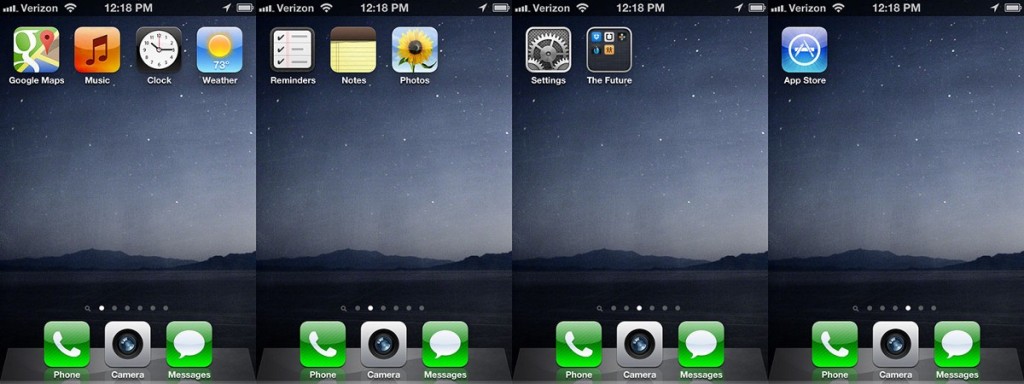Here’s a novel idea: get a smartphone, and remove popular apps from it. Then disable some of the apps that you found on it when you took the phone out of the box.
Jake Knapp, a design partner at Google Ventures, did just that. (He documented his experience in this blog post.)
Why? He figured there was no reason to walk around in a never-ending state of technology-driven FOMO (fear of missing out). I admire the guy for doing what he did and largely sticking with his resolution months later.
His strategy consists largely of having a bunch of screens that have very few apps on them. He also uninstalled many popular apps, including “anything with a stream.”
Here’s what his iPhone screens look like:
Knapp admits to an all-too-common lack of smartphone discipline. I think I’d have the same lack of discipline if I had an iPhone. Sometimes I think the key reason I don’t constantly look at my iPod Touch is because it only ever shows new stuff when it’s connected to the Internet via wifi.
Knapp might be on to something. College students might want to follow his lead since, according to a study from Kent State University:
… cell phone use was negatively related to GPA and positively related to anxiety. Following this, GPA was positively related to happiness while anxiety was negatively related to happiness. Thus, for the population studied, high frequency cell phone users tended to have lower GPA, higher anxiety, and lower satisfaction with life (happiness) relative to their peers who used the cell phone less often.
Are you also incapable of suppressing your FOMO? If yes, what do you think of Knapp’s tactics? Would this work for you, maybe as a New Year’s resolution?
